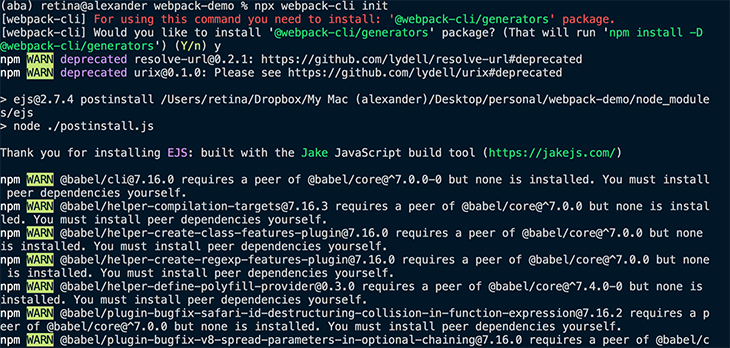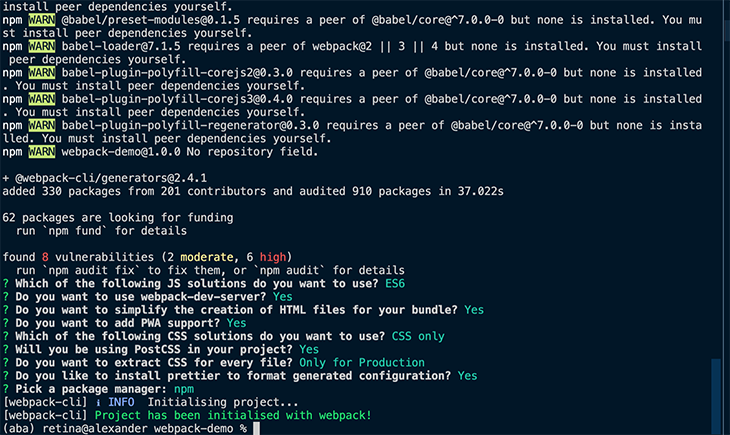

- Npm build webpack without externals install#
- Npm build webpack without externals full#
- Npm build webpack without externals code#
Which you can access the Serverless instance and the options given on the command-line. The lib export also provides the serverless and options properties, through M圜ustomEntry1: './custom/path/something.js' Then you do not have to care anymore when you add or remove functions from your service: // Ĭustom entries that are not part of the SLS build process can be added too: // You can let the plugin determine the correct handler entry points at build time. This is the preferred way to configure webpack - the plugin will take care ofĪs much of the configuration (and subsequent changes in your services) as it can. To make the configuration easier and to build fully dynamic configurations. Serverless-webpack exposes a lib object, that can be used in your This is useful if the confguration depends on asynchronous functions, for example, defining the AccountId of the current aws user inside AWS which does not support defining normal process environment variables.Ī basic Webpack promise configuration might look like this: // Version if the local Node.js version supports async/awaitĬonst slsw = require('serverless-webpack') Ĭonst accountId = await .aws.getAccountId() a promise or async function) which will be awaited by the plugin and resolves to the final configuration object.

folder/Ī base Webpack configuration might look like this: // Īlternatively the Webpack configuration can export an asynchronous object (e.g. Alternatively, you can specify a different file or configuration in serverless.yml. Packager: 'npm' # Packager that will be used to package your external modulesĮxcludeFiles: src/**/*.test.js # Provide a glob for files to ignore Webpack configuration fileīy default the plugin will look for a in the service directory. IncludeModules: false # Node modules configuration for packaging WebpackConfig: '' # Name of webpack configuration file See the sections below for detailed descriptions of the settings. All settings are optional and will be set to reasonable defaults if missing. The configuration of the plugin is done by defining a custom: webpack object in your serverless.yml with your specific configuration.
Npm build webpack without externals install#
Install $ npm install serverless-webpack -save-devĪdd the plugin to your serverless.yml file: plugins: Added support for asynchronous webpack configurationįor the complete release notes see the end of this document.The old configuration still works but will be removed in the next major release. You should now use a custom.webpack object to configure everything relevant for the plugin. Recent improvements and important changes for 5.x Support asynchronous webpack configuration.
Npm build webpack without externals code#
Individually, resulting in smaller Lambda packages that contain only the code andĭependencies needed to run the function.


When using it with the thread-loader set workerParallelJobs: 2.A Serverless v1.x plugin to build your lambda functions with Webpack.
Npm build webpack without externals full#
There is a full example on the ts-loader GitHub repository. LoadersĪpply loaders to the minimal number of modules necessary. Newer versions create more efficient module trees and increase resolving speed. On top of this, keeping your package manager (e.g. Staying up-to-date with Node.js can also help with performance. The latest recommended version of webpack is: We are always making performance improvements. The following best practices should help, whether you're running build scripts in development or production. This guide contains some useful tips for improving build/compilation performance.


 0 kommentar(er)
0 kommentar(er)
